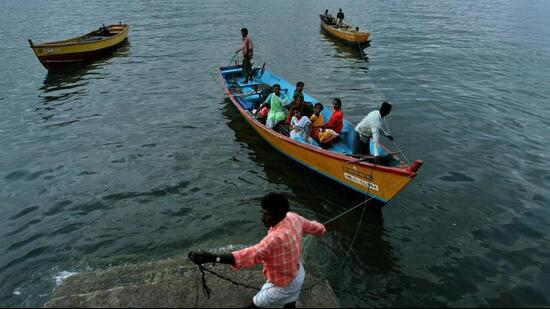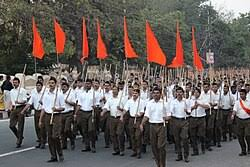Prime Minister Narendra Modi sent a heartfelt message, expressing his warmest wishes to Chief Adviser Muhammad Yunus and the people of Bangladesh, on the joyous occasion of Eid-al-Fitr, marking the end of the holy month of Ramadan.
Yunus shared the letter on X and wrote, "Indian Prime Minister Narendra Modi sends the following message to Chief Adviser Professor Muhammad Yunus to wish people of Bangladesh on the occasion of Eid-ul-Fitar."
In the letter, Modi wrote, "As the blessed month of Ramadan comes to a close, I take this moment to extend warm greetings and felicitations to you and the people of Bangladesh on the joyous occasion of the festival of Eid al-Fitr."
Meanwhile a controversy has been triggered.
"The seven states of India, in the eastern part of India - called the seven sister states are completely landlocked. They have no way to reach the ocean. We (Bangladesh) are the only guardian of the ocean for the entire region (northeast India)," Yunus is seen saying in the video.
On the other hand, on Yunus' statement, '7 sisters of India landlocked. defence Expert Dhruv Katoch says, "... He had no business to mention India... If we have connectivity and how we connect them to the oceans, that is the problem of the government and we are handling that."
"We also have the 'Kaladaan' river project which will be completed very shortly... As far as access to the sea is concerned, we don't need Bangladesh... I did not understand the relevance of that statement and why he made it in China. He is obviously trying to send a message to India and there are two kinds of messages that are trying to go across.
He is trying to tell China that if China invests in Bangladesh, Bangladesh's unique location can give China access through India's northeastern states in a cooperative manner to Nepal and Bhutan...
To put India into the conversation is very threatening... Is he directly trying to tell India that he will cut off the northeast from us?...
On the sidelines of BIMSTEC, PM Narendra Modi will be meeting Mohammad Yunus, or in other words, Mr Yunus has sought a meeting with PM Modi... India is too big a country to be threatened by any country... Bangladesh is totally irrelevant...".
Economist and member of the Economic Advisory Council to the Prime Minister, Sanjeev Sanyal, questioned the logic behind invoking India’s internal geography in an economic pitch to China.
“Interesting that Yunus is making a public appeal to the Chinese on the basis that 7 states in India are landlocked. China is welcome to invest in Bangladesh, but what exactly is the significance of 7 Indian states being landlocked?” Sanyal posted.
The comments came also at a time as Bangladesh signed nine agreements with China after Yunus’ meeting with President Xi Jinping. The deals cover economic and technical cooperation, infrastructure, media, culture and health.
Bangladesh also welcomed Chinese participation in the Teesta River Comprehensive Management and Restoration Project — a plan previously linked to India under the Hasina government — and the Mongla Port modernisation initiative.
Yunus used the meeting to highlight the 2024 student protests that led to regime change in Dhaka and urged China to play a “greater role” in ensuring peace and stability. He also requested Chinese support for water management, calling China the “master of water management,” and sought a 50-year plan from Beijing.
Xi described Bangladesh as a “trustworthy neighbour” and confirmed zero-tariff access for Bangladeshi goods until 2028. He proposed negotiations on a Free Trade and Investment Agreement and promised greater investment support.
Yunus further called for a reduction in Chinese loan interest rates from 3% to 1–2% and a waiver of commitment fees. He pitched Bangladesh as a relocation base for Chinese manufacturers looking to offset U.S. tariffs.
ends
China has hosted multiple delegations from Dhaka in recent months, including advisers, opposition leaders, and hardline religious groups. Yunus is now scheduled to attend the BIMSTEC Summit in Bangkok, where he has requested a meeting with Prime Minister Narendra Modi — which India has not yet confirmed.
As Beijing expands its role in the region, Yunus’ positioning of Bangladesh signals a clear shift in Dhaka’s diplomatic and economic alignment.




































